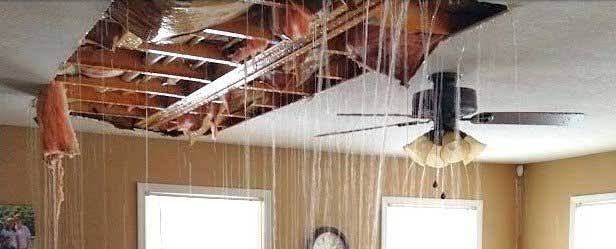Whether it’s from an appliance malfunction, a busted pipe, or a storm, water damage can be disastrous. The immediate aftermath of water intrusion can be overwhelming, but the real danger lies in the long-term damage it can cause if not addressed quickly and properly. Untreated water damage can result in expensive repairs and health problems due to mold growth and structural degradation. Fortunately, there are steps you can take to minimize the risk of long-term damage.
Act Quickly To Minimize The Damage
The first and most critical step in preventing long-term damage is to act quickly. Water can start causing damage immediately, so it’s important to respond as soon as you notice the issue. If it’s a plumbing problem, turn off the water supply and remove as much water as you can with buckets, towels, or a wet/dry vacuum. If the damage is extensive, especially in cases of flooding or broken pipes, contact a water damage restoration professional to ensure the situation is handled properly. Long-term structural and health problems are less likely to arise the faster the water is removed. Water damage cleanup is crucial to preventing long-term issues such as mold growth, structural weakening, and other costly repairs that could arise from untreated water damage.
Dry The Area Thoroughly
Once the water is removed, the next step is to ensure that the affected area is completely dried. Drying the surface alone might not be sufficient. It is crucial to use dehumidifiers, fans, and open windows to increase ventilation because water can soak into walls, flooring, and furniture. A professional restoration team often has specialized equipment, such as industrial dehumidifiers, that are much more efficient than household alternatives. This complete drying procedure is crucial to preventing mold, which can grow in damp environments in as little as 24 to 48 hours.
Inspect For Hidden Water Damage
Even if the visible areas appear dry, there may still be moisture trapped behind walls, under floors, or within insulation. This hidden water can lead to serious long-term problems, including rot, mold, and compromised structural integrity. It’s essential to check areas that might not be immediately obvious. If you can access the area under your floorboards or behind your drywall, inspect for any signs of moisture. Cleaning up water damage involves more than simply clearing up the immediate mess; it also involves avoiding long-term harm that could compromise your home’s safety and worth.
Mold Prevention
Mold is one of the most common and dangerous long-term consequences of water damage. The combination of water and warmth creates an ideal breeding ground for mold spores to spread and flourish. To prevent mold growth, it’s crucial to dry all affected surfaces as quickly as possible. Keep in mind that even the smallest amounts of moisture can lead to significant mold growth, which can pose serious health risks. It’s critical to clean the area right once and get rid of the moisture source if you see any telltale symptoms of mold, such as a musty odor or obvious black spots.
Check For Structural Damage
Water can weaken and damage structural elements of your home, such as wood beams, insulation, and flooring. Once the area has dried, spend some time looking for any obvious damage. Warped, discolored, or softwood can indicate that water has compromised the integrity of your home. Likewise, flooring materials such as laminate and carpeting may need to be replaced if water has saturated them for too long. Early structural damage restoration is crucial to avoiding more problems and guaranteeing your home’s safety.
Professional Help For Long-Term Protection
When dealing with water damage, it’s usually advisable to have professional help, even though acting quickly on your own can help stop additional damage. Restoration specialists are trained to detect hidden issues, clean up water damage thoroughly, and repair structural elements. They also possess the tools necessary to expedite the drying process, which lowers the possibility of mold growth and other problems. By hiring a professional, you can be sure that every corner of your home is addressed, helping you avoid long-term damage.
Conclusion
Cleaning up water damage involves more than simply clearing up the immediate mess; it also involves avoiding long-term harm that could compromise your home’s safety and worth. By acting quickly, drying thoroughly, and inspecting for hidden damage, you can minimize the risk of mold growth, structural issues, and other costly problems. If the damage is extensive, enlisting the help of a professional restoration service is a wise investment that ensures your home is restored to its pre-damaged condition.
